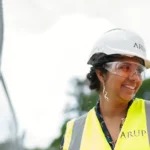Obtaining a modular construction permit can be a hassle and frustrating, not to mention getting a permit for a building method. Even though modular construction differs from traditional construction, you must go through the conventional permit process.
Furthermore, these projects still need to meet state and federal building codes, even though the construction method differs.
Here, we will look at what it takes to get a modular construction permit and the steps you must follow.
Steps for Modular Permits
For this project element, modular construction must strive for state approvals. However, the remainder of the conventional and modular permitting processes are nearly identical.
Essentially, the owner usually puts forward the package for the local authorities to review (for the site-built element).
1. Modular Submission (State)
Structural, MEP, fire alarm, fire protection, and architecture plan sets are all included in the permit.
Structural calculations, all fire-rated penetrations and assemblies, as well as the specifications and site connections, are also included in the submission.
While some states use authorized third-party agencies, others use their internal institution to provide these reviews for approval. For example, the permit only covers the modular components of the building.
The local permit application includes the state’s approval of modular construction. Still, it serves solely as a reference for the authority having jurisdiction (AHJ), which means that the AHJ has no control over modular plans.
2. Jurisdiction Submission (Local)
This construction permit issued by the city or local authority will allow construction to commence, allowing you to take part in this popular trend of real estate. As soon as the city receives a copy of the state-approved plans for the modular part, they usually finish their examination of the submission but do not issue a full permit.
The local set addresses only the structure’s non-modular components, and the local permit is necessary for the job site to be ready for manufactured modules to be set up.
All building parts are hatched or screened for the local permit set, indicating that the local permit does not cover the hatched part.
3. State Inspections
During production, the boxes are inspected and labeled. The local inspector doesn’t have jurisdiction over these labeled boxes once they arrive at the location.
A body supervises the components in the majority of states. Whichever state you are in will determine the inspection body.
4. Local Inspections
The local inspector examines all on-site work and connections for your modular construction permit. In addition, the state authorities are alerted for a separate on-site inspection if the modules arrive damaged or need to be repaired on-site.
Making Light Work of the Process
With the use of this guide, the modular construction license process hopefully all seems far more simple. However, this doesn’t mean you need to do it all alone. When you partner up with professionals who handle your application and certification for you, you can relax and feel assured that everything will go smoothly.





